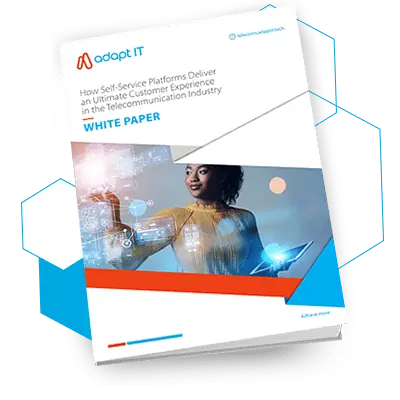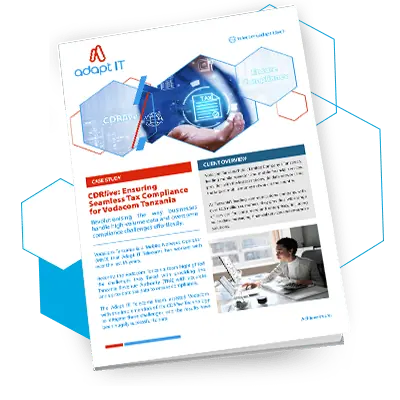Machine Learning (ML) and Artificial Intelligence (AI) have been in Telecoms news consistently over the last few years, and for a good reason. These two Technologies have become critical to a Telcos business success both globally and telecoms in South Africa. A recent study found that Telcos are among the early adopters of this Technology and are using it to enhance customer retention, enable self-service, improve equipment maintenance and reduce operational costs. This Technology is creating more opportunities to drive revenue. With all the positives, there are also some challenges, and we dive into both below.
Table of Contents
Toggle
How Telcos Can Harness the Power of Machine Learning and Artificial Intelligence
Telcos are using AI and ML to help solve complicated problems related to the mobile network and its operations. According to the study by Nvidia, AI and machine learning in Telecoms are assisting telcos with optimising operations (60%), lowering costs (44%) and enhancing customer engagement (35%). This is made possible through AI and ML technology which is being used to transform underperforming mobile networks into self-optimising networks. Other benefits of this technology include the following:
Optimising the network
Telecom operators can utilise this technology for predictive analysis to monitor network equipment and highlight or anticipate any problems or issues. ML algorithms are also used to continuously identify patterns and trends while scanning network data to detect abnormalities. In this way, the telecoms operator can efficiently manage issues detected quickly before they affect customers. This not only enhances operations but improves customer experience.
Enhancing network security
AI and ML technologies can also enhance a network’s safety and security. This technology can monitor the network’s health and analyse past security incidents to make precautionary predictions and identify possible network vulnerabilities. In doing so, the telecoms operator can predict threats and complications while proactively putting in measures to manage these.
Fraud detection
Through advanced analytics, which utilises AI and ML technology, a network can detect fraudulent activity. This is made possible by developing fraud detection models that analyse network data and highlight abnormalities that can be linked to fraud. The advanced analytics model will alert the network of these abnormalities so that further investigation can occur.
Better decision-making
By utilising AI and ML technologies for advanced analytics, telecom operators can get a full view of every network aspect and what could impact revenue and growth. With access to near real-time data analysis, Telcos can make informed decisions related to network operations, customer churn, new revenue streams, customer experience and more. With this data, any behavioural changes that might occur on the network, relating to customer, product, revenue or infrastructure operations can be alerted, and pro-actively addressed, to enable the newtork to engage early on when these changes are highlighted.WIth the use of ML and AI algorithms, seasonal changes are also included to ensure false-positive alerts are minimized, allowing for expected behavioural fluctuations.

Challenges of Implementing Machine Learning and Artificial Intelligence in Telecoms
The benefits and opportunities ML and AI technologies provide for advanced telecoms are clear. Still, it must be noted that there are several challenges that telecom operators need help with regarding this implementation.
Data privacy and security
The first is related to the concerns around data privacy and security. In today’s day and age, networks must keep their customer’s sensitive data secure. With large amounts of data being generated and analysed, more users have access to it, which increases the chance of data leakage. One of the telecoms solutions to this is to partner with technology vendors and third-party service providers who have the necessary expertise to ensure the safety and security of this data.
Lack of technical expertise
Another challenge being experienced in telecoms is related to the need for more technical expertise. Many Telcos do not have the time to build and create data scientist teams to manage advanced analytics and AI systems. Many Telcos are turning to in-house training and development programs to overcome the need for more expertise and knowledge.
Data quality
For AI capabilities to be as effective as possible, it is necessary to have complete and accurate data. This requires using trusted and correct data sets made up of clean, accessible and secure data., along with specialized data governance, ensuring the trustworthiness of the data being utilized for the data driven decision making required. Combining natural language processing (NLP) and machine learning (ML) can solve this. NLP can interpret and analyse spoken and written human language, which can be used to extract context, meaning and intent from unstructured data. When this is combined with ML, telecom operators can generate actionable, exact insights.
Data Availability
Due to the large amounts of data being ingested for modelling and data science, another challange is the availability of the data, ensuring it is readily available to be analyzed, where a trusted, high performing ingestion product, such as CDRlive, is imperative.
High initial investment costs
The high investment cost is one of the most significant challenges associated with ML and AI implementation, especially in telecoms in SA. Since this is a specialised service solution, data analysis scientists and experts must run the solutions and deploy the models. It also requires infrastructure, hardware and software, which comes with a significant price tag. Cloud-based AI/ML solutions are being used to solve the high investment cost and make implementing these technologies more affordable.
Case Studies of Artificial Intelligence and Machine Learning Implementation
Several different AI telecom solutions have been deployed globally. The first example is Vodafone’s launch of TOBi. TOBi is an AI assistant app for customer management. It is Vodafone’s way of taking customer care to the next level. This chatbot utilises AI and smart speech recognition tools to help resolve customer queries in record time. Since its launch in 2021, 70% of the customer queries coming through Vodafone’s digital channels are resolved by TOBi.
Another great AI for telecommunications application example vastly different from the above and showcases the versatility of this technology is Nokia’s AVA Telco AI Ecosystem. This technology enables telcos to automate network operations and service assurance, cut costs, and increase agility.
Conclusion
From the above, it is clear that AI and ML technologies are changing the telecoms industry as we know it. With this technology, telecom operators can gain significant insight into all aspects of their business and identify revenue-boosting opportunities and elements affecting network operational and customer churn. This is becoming vital to stay ahead of competitors within the highly competitive telecommunications industry. Telcos, especially SA telecoms, must look towards technologies that help improve performance and profitability to grow their business.

Future-Proof your Business and Increase your Revenue with CDRlive
Discover how CDR is key to making effective revenue and churn decisions in the Telco industry and why call data records are the lifeblood of telecommunications.

I’m the Advanced Analytics Solution Stream Owner at Adapt IT Telecoms. With my years of experience in the ICT industry, I have gained skills in various areas including Sales, Strategy, Professional Services, Management, Cloud, and Digital Transformation. My team and I specialise in providing niche large data solutions to markets such as mobile network, education, and regulatory. As the Solution Stream Owner, I’m responsible for ensuring that we deliver top-notch services and innovative solutions to our clients. My journey in this field started as a technical engineer and over the years, I have moved into pre-sales, business development, consulting, analytics, commercial, and operations management. This has given me a diverse set of skills, which allows me to have conversations that lead to innovative solutions. What I’m most passionate about is the integration between software and people, both within society and organisations. It’s a challenge, but one that I find extremely rewarding. I’m committed to ensuring that we continue to provide cutting-edge solutions that help our clients stay ahead of the competition.




